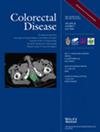Histological and photoacoustic evaluation of rectal cancer after neoadjuvant therapy using microvascular density
Abstract
Aim
As non-operative management of rectal cancer proliferates, re-staging and surveillance methods are critical in selecting appropriate patients for organ preservation versus proctectomy. In previous work, the authors have shown that transrectal acoustic resolution photoacoustic microscopy (ARPAM) co-registered with ultrasound can differentiate residual cancer from complete tumoural response to neoadjuvant therapy. We hypothesize that these findings are due to changes in microvascular density (MVD).
Methods
Patients with rectal adenocarcinoma who underwent neoadjuvant therapy, transrectal photoacoustic imaging and resection were included. We first compared immunohistochemical staining with erythroblast transformation-specific-related gene (ERG) immunostain to standard CD31 to confirm adequate identification of endothelium. Tissue sections from identical blocks were stained with CD31 and ERG, and then a correlation was calculated between manually labelled CD31-stained vessels and ERG nuclei density. Second, representative tissue blocks from responders, partial responders and non-responders were stained with ERG. ERG nuclei density was quantified as a proxy for MVD.
Results
CD31 MVD and ERG nuclei density were strongly correlated (R2 = 0.87; P < 0.01). In the tumour bed of patients after neoadjuvant therapy, MVD of complete responders (599 nuclei/mm2; 95% CI 434–764) is significantly higher (P < 0.01) than that of partial responders (185 nuclei/mm2; 95% CI 64–306) and non-responders (117 nuclei/mm2; 95% CI 42–192). No significant difference was found between the partial responders and non-responders (P = 0.60).
Conclusion
Microvascular density appears highest in cases of complete tumour response to neoadjuvant therapy, similar to normal rectal tissue. The histological microvascular patterns seen in treated tissue may explain the imaging patterns seen in photoacoustic microscopy.

 求助内容:
求助内容: 应助结果提醒方式:
应助结果提醒方式:


